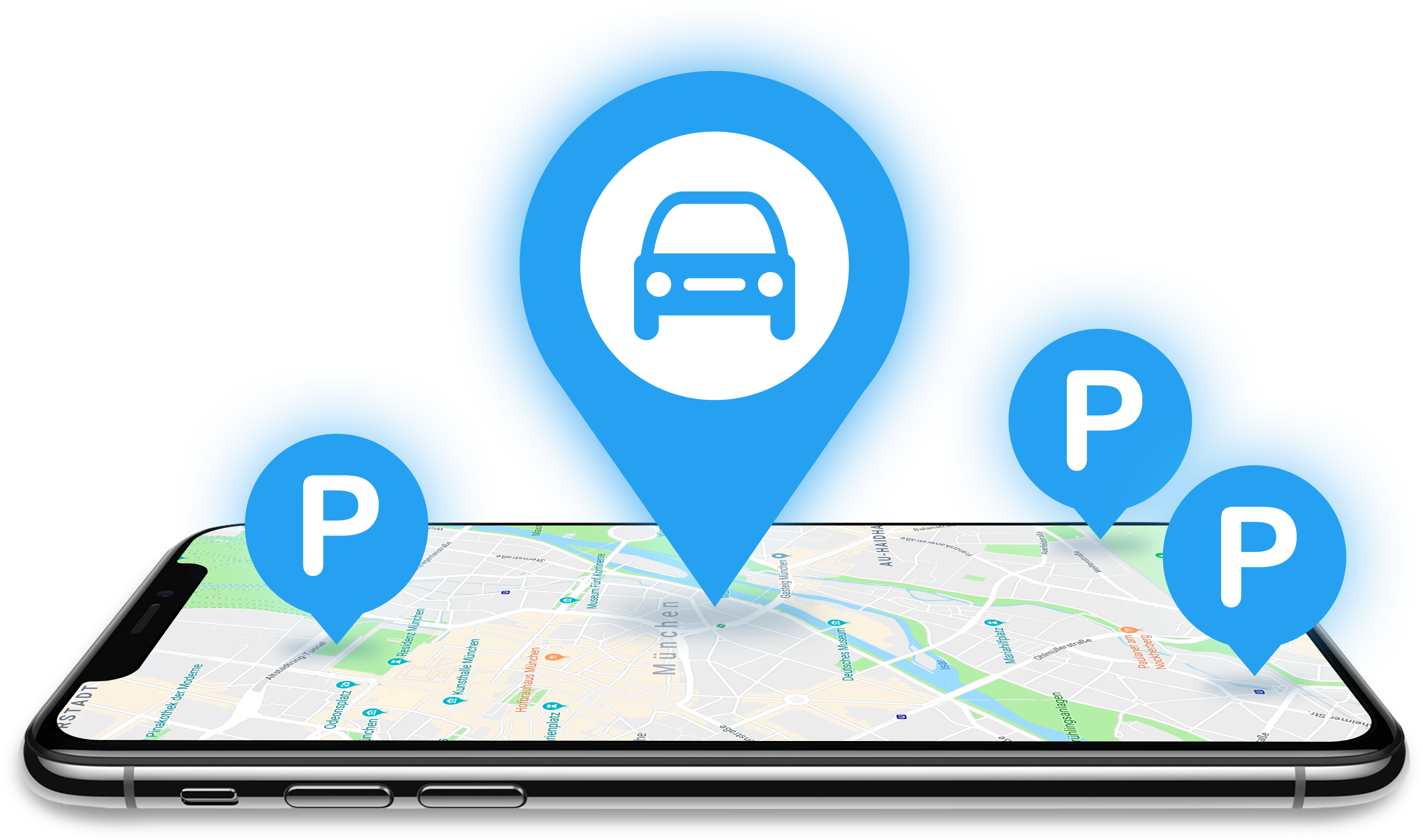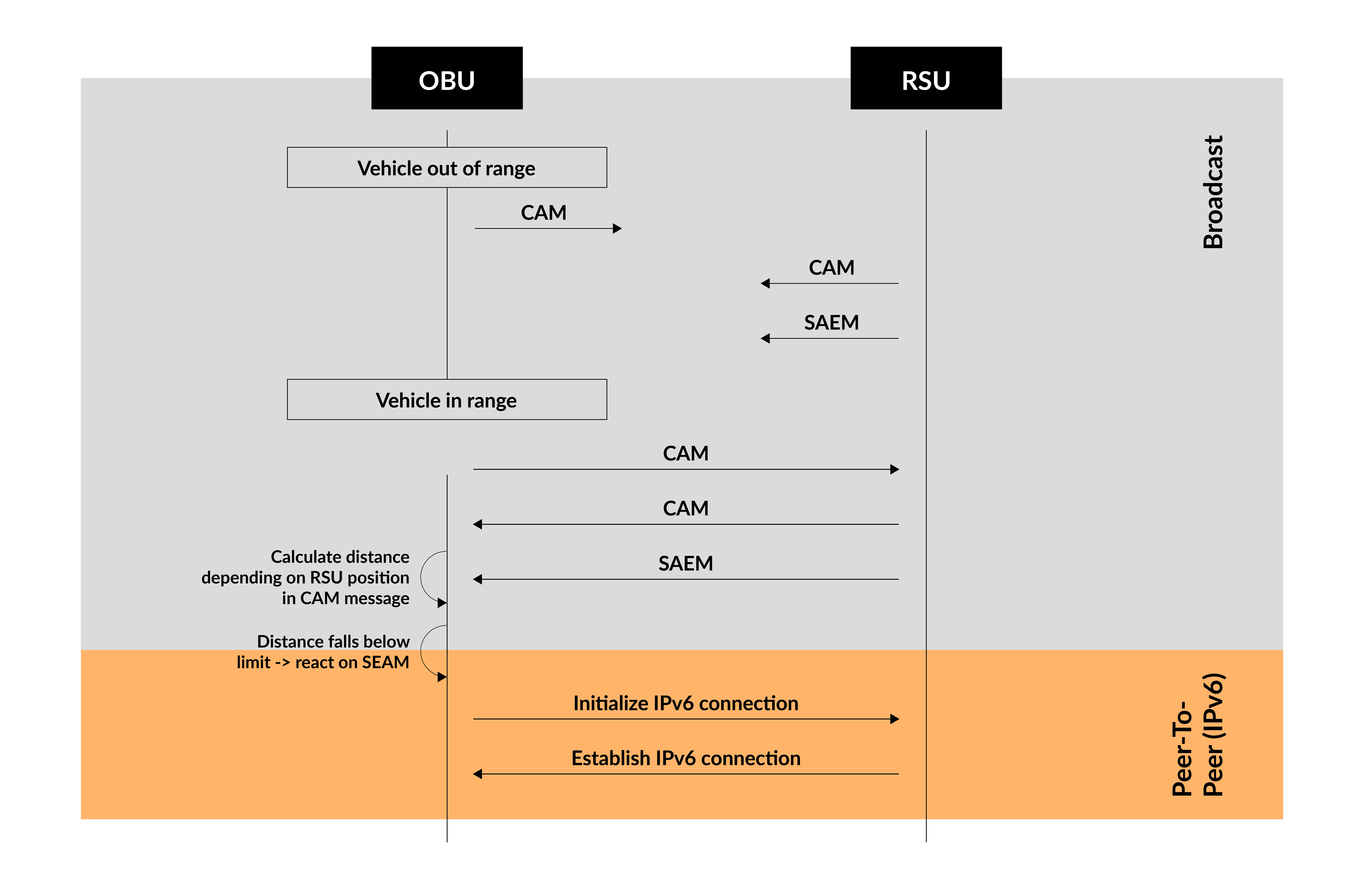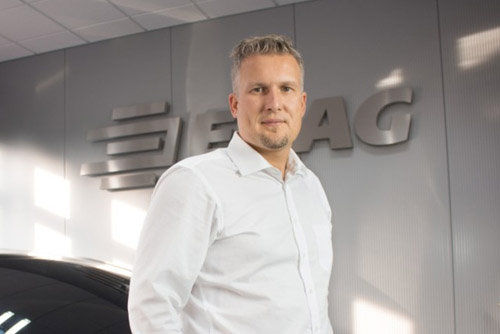The establishment of a holistic mobility ecosystem requires the networking of vehicle and infrastructure through comprehensive and easy-to-integrate software interfaces and standards. Using the concept of off-street parking, this article illustrates practical experiences how a Smart Parking System connects different stakeholders through a software platform for data exchange, payment processes and the automotive connectivity standard ITS-G5 (WLANp).
trive.park - Data and payment platform for digital parking garage services
The trive.park data and payment platform simplifies this dilemma of combining infrastructure and vehicles by digitizing the processes of off-street parking. Users can book selected parking tickets and special parking offers via app before they even start their journey. The offers range from the classic short-term parking ticket, to day tickets of varying duration, to specific discounts such as a shopping package with high discounts.
Networked and cooperative automated valet parking with cloud and connectivity solutions
Automated off-street parking, also known as Automated Valet Parking (AVP), is only possible through the networked and cooperative collaboration of a wide range of partners. The integration of mobility service providers, vehicle developers and the large number of parking garage operators requires such a digital management system for the handling of parking processes. In addition, a permanent exchange of all relevant data through innovative Car2X communication and scalable back-end systems is necessary.
These tasks are examined in the funded project SynCoPark. A multi-storey parking lot in Braunschweig at the research airport serves as a test field. The SynCoPark project is funded by the research program "Automation and Networking in Road Traffic" of the Federal Ministry of Transport and Digital Infrastructure and supported with 2.6 million Euro. 1
The colleagues at trive.me are responsible for all cloud and connectivity content and adapt the know-how from the trive.park platform for the AVP process. All data necessary for handling an AVP process is stored there and communicated to the vehicle via Car2X technologies. Offline-capable communication between the vehicle and the parking lot via the cITS standard "ITS-G5" plays a special role.

ITS-G5 as possibility for V2X communication
ITS-G5 is a standard for vehicle networking based on the WLAN standard IEEE 802.11p or also called WLANp. Since 2010, WLANp is a modification of the classic WLAN IEEE 802.11 approved by the standardization institute IEEE. It defines improvements needed to support Intelligent Transport Systems (ITS) applications.2
This allows vehicles to be conntected with each other and with their environment in order to communicate over hundreds of meters with each other about routes and speed data.
The 5.9 GHz frequency band is used for this purpose, which has been specially reserved for Car2X communication. VW has already integrated this technology as standard in the Golf 8.
Car2X communication in the parking garage
Car2X communication can play an important role not only in traffic but also in the parking lot. In the "Automated Valet Parking" use case, connectivity functions must be executable independently of the parking lot operator and vehicle manufacturer.
However, the standard used for this communication has to fulfill some prerequisites to be relevant in this application area, see also Figure 3. Besides the prerequisites of a large range for efficient use of the standard, low latencies and high reliability play an important role. The cloud-based services function is particularly important for vehicles in parking garages without an internet connection. This is provided by the ITS-G5, which is suitable for these use cases.
Communication between two ITS stations
Communication requires that each vehicle has an on-board unit (OBU) and road-side units integrated into the infrastructure. OBUs and RSUs are almost identical in their specifications, the RSU also has an Ethernet connection in order to implement backend based services.
The basic communication is done automatically by broadcasting of certain messages, such as
- Cooperative Awareness Messages (CAM), which permanently shares e.g. position, speed and direction of travel.
- Service Announcement Extended Messages (SAEM), which can also be used by the RSU to indicate special infrastructure services. Example: "Smart Car Park nearby".
These CAMs can also be used to calculate the distance between ITS stations. If this falls below a defined limit, which is necessary for a stable connection, the OBU in the vehicle can react to the SAEM of the RSU. This enables a connection to be established to exchange messages and data via this connection. This is required, for example, to implement functions of the described Smart Parking Use Case, such as ticket pulling or barrier opening. The initial connection setup is shown in Figure 1.

Figure 1: communication between the ITS stations (OBU and RSU)
What is new about this procedure: The developed Peer-to-Peer connection for encrypted message exchange
The special feature of the process developed in the funding project is that a direct peer-to-peer connection via IPv6 is established between the on-board unit and the road-side unit. Without this connection, with a standard use of broadcast messages, user-related and sensitive data would also have been visible to all Car2X participants in the environment.

Figure 2: Communication setup to the backend via Ethernet connection of the RSU
Figure 2 shows the function "Verification of access authorization to the parking garage and barrier opening" as an example of communication with the backend. After successful connection establishment, the MAC address of the onboard unit is sent to the road side unit. This enables the system to identify the vehicle, e.g. to check the access authorization at the entrance in the backend. For this purpose, the RSU sends http-requests to the back end, which in the present system sends a signal for opening to the likewise digitized barrier after successful testing.
The following YouTube Video illustrates the whole process using prototypes:
Outlook
The Use Case of the networked Automated Valet Parking will be transferred to the underground car park of the Elbphilharmonie Concert Hall in Hamburg in the further course of the funding project. The project will then serve as one of the anchor projects of the ITS World Congress 2021 in Hamburg.
The implementation of the developed functions suitable for series production via the ITS G5 standard requires further developments in the field of standardization for the dissemination of cITS applications. Within the project, the standard-compliant applicability could be proven. However, different functions require a specific cITS application in order to extend the given communication messages application-specific.
Therefore, a separate cITS app store is conceivable, where developers can publish their application. Infrastructure operators and vehicle manufacturers can then use it to install cITS apps and transparently point out the applicability of the functions. In this way, a rapid spread of infrastructure services can be achieved.
As "Vice President Digital Transformation", Heiko Herchet will be happy to answer your questions and suggestions and is looking forward to an exchange.
1 https://www.syncopark.de/?lang=en
2 https://www.elektronik-kompendium.de/sites/net/2407231.htm




